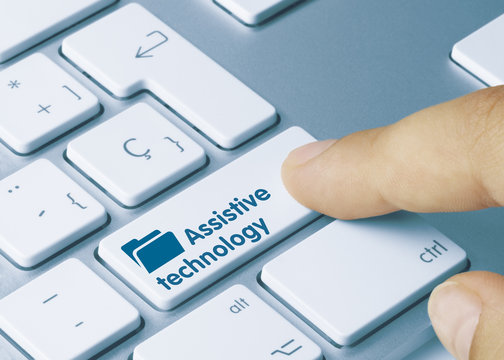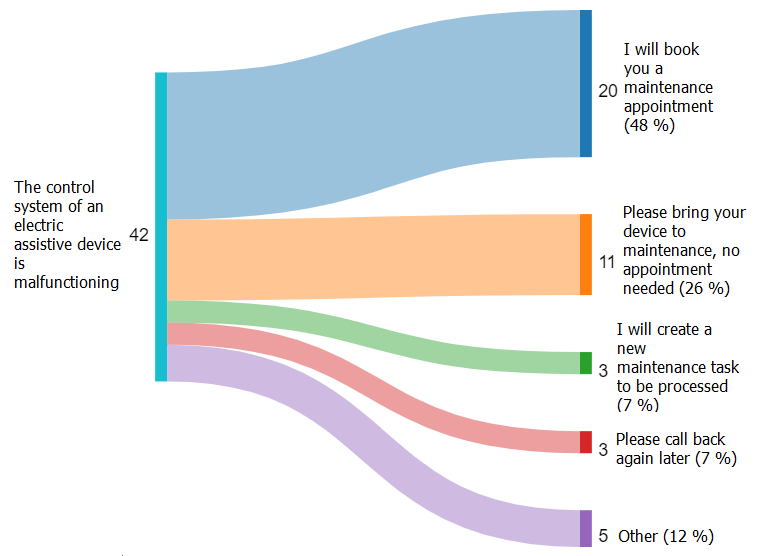
Savonia Article Pro: Analysis of customer service patterns in assistive device services – a foundation for future digital service solutions?
Savonia Article Pro is a collection of multidisciplinary Savonia expertise on various topics.
This work is licensed under CC BY-SA 4.0
The world’s population is getting older, and the need for assistive devices is increasing. Assistive devices are crucial for the independency, participation, and equality for people with disabilities. Smooth customer service procedures help delivering public assistive device services professionally and efficiently, keeping the costs low and the customers happy. Unfortunately, there is a lack of general knowledge of the different assistive device services available. (Salminen 2010, 13; Skymne et al. 2012, 195-200)
In Finland, assistive device services are regulated by several laws and provided by many service providers, such as welfare counties, university hospitals, social services, and school districts. (Salminen 2010, 29-36; Hurnasti 2006, 14, Health Village 2022)
Customer service has traditionally been inflexible in healthcare, a field with many regulations, a strong culture of hierarchy, and a lack of economic incentives for customer satisfaction. Even using the word “customer” about people using healthcare services has been seen as inappropriate, as it has been seen to imply an economic relationship that does not fit the traditional medical ethos of selflessly caring for the ill. (Eisenberg 1997, 20; Howard 1999, 312)
The attitudes towards customer service in healthcare are changing, bringing new incentives and goals to the healthcare field. According to Finnish assistive device service customers, there is a need for new customer service processes in public assistive device services. Both assistive device use and customer satisfaction has been shown to increase when assistive device services are cus-tomer centered. Finnish assistive device professionals believe that digitalization could make assis-tive device services more accessible for all. (Finnish Association of People with Physical Disabilities 2020; Finnish Association of People with Physical Disabilities 2021; Kanervo 2018, 47-52; Salminen 2010, 20)
Towards Digital Services by analysing customer contacts
Between 18.8 and 18.10.2022, the customer service employees at HUS Assistive Device Center (ADC) collected information about all arriving customer contacts to the assessment customer ser-vice and the maintenance customer service (MDC). During that period, there were 633 contacts to the ADC. Simultaneously MDC got 423 contacts. ADC contacts were mostly calls (95 %, n = 634). In addition, 96 % (n = 406) of customers called to MDC.
The questions and answers from both units were sorted into question phrases and answer phrases. Content analysis methods were utilized to find the most common questions and the most common answers to these questions.
The content analysis shows that the number of customer contacts to HUS Assistive Device Center varies over time. A substantial part of the resources and work time in the customer service is used redirecting misdirected customer contacts. Certain questions are almost invariably answered the same way, and could thus possibly be automated, enabling more resources for more demanding customer service tasks. Figure 1 shows different types of answers, when customer has let MDC know that the control system of an electric assistive device is malfunctioning.

Knowledge about the customer contacts to HUS Assistive Device Center could also be used to im-prove the telephone service, develop the website, or extend the customer service hours by utilizing digital services, more personnel, or purchase services. This could provide thesis subjects for stu-dents in the fields of service design and software engineering.
The next steps
More research and development of customer service in assistive device services is still needed. There could be applications for digital customer service solutions in assistive device services, but they require systematic research and testing.
This article is based on Ville Malm’s master’s thesis, which can be found on Theseus: https://urn.fi/URN:NBN:fi:amk-2024051010678.
Writers:
Ville Malm, Master of Digital Health (Student), Savonia University of Applied Sciences
Bryn Lane, Part-time Lecturer, MBA, CFA, Savonia University of Applied Sciences, Unit of Continuous Learning, Master School
Liisa Klemola, PhD, Lecturer, Savonia University of Applied Sciences, Unit of Continuous Learning, Master School
References:
Finnish Association of People with Physical Disabilities 2020. Apuvälinehuolto kaipaa kehittelyä. IT-lehti 11/2020. https://www.it-lehti.fi/kategoriat/apuvalineet/apuvalinehuolto-kaipaa-kehittelya.html
Finnish Association of People with Physical Disabilities 2021. Apuvälineiden huollossa keskeistä on asiakaslähtöisyys. IT-lehti 11/2021 https://www.it-lehti.fi/kategoriat/apuvalineet/apuvalineiden-huollossa-keskeista-on-asiakaslahtoisyys.html
Eisenberg, B. 1997, Customer Service in Healthcare: A New Era. Journal article, Hospital & Health Services Administration 42(1), 17-31.
Health Village 2022. Apuvälinepalveluiden lainsäädäntö. Website. https://www.terveyskyla.fi/kuntoutumistalo/ammattilaiset/apuvälineet/apuvälinepalveluiden-järjestämisvastuu-ja-lainsäädäntö-ohjeita/apuvälinepalveluiden-lainsäädäntö.
Howard, J. 1999. Hospital Customer Service in a Changing Healthcare World: Does It Matter? Jour-nal article, Journal of Healthcare Management 44(4), 312-325.
Hurnasti, T. 2006. Apuvälinepalveluja ohjaavien käsitteiden tulkintaa. Kuntoutustyöntekijöiden eri-laiset näkemykset ”lääkinnällisen kunoutuksen apuväline” ja päivittäiset toiminnot” -käsitteistä. Work paper, Stakes.
Kanervo, S. 2018. Tulevaisuuden apuvälinepalvelut. Master’s thesis, Satakunnan ammattikorkea-koulu. https://urn.fi/URN:NBN:fi:amk-2018060612933.
Salminen, A-L. 2010. Apuvälinekirja. Book. Kouvola: Opike
Skymne, C.; Dahlin-Ivanoff, S.; Claesson, L.; & Eklund, K. 2012. Getting used to assistive devices: Ambivalent experiences by frail elderly persons. Journal article, Scandinavian Journal of Occupa-tional Therapy 19/2012, 194-203.